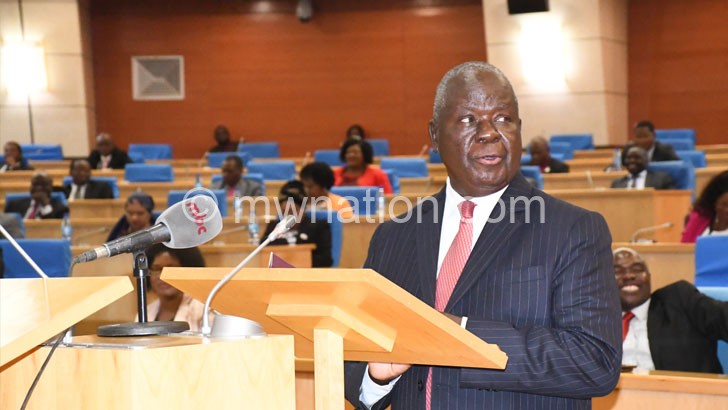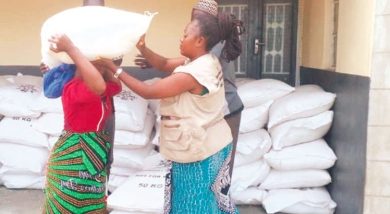Treasury borrows K630bn in 6 months
Malawi Government has borrowed K630 billion over a six-month period from July to December last year, pushing the Total Public Debt Stock (TPD) to K4.76 trillion with analysts describing the situation as “worrisome”.
The increase in debt stock from the K4.13 trillion recorded in June 2020 means that in nominal terms, public debt surged by K630 billion and on a monthly basis, government was borrowing K105 billion to finance the fiscal deficit which now yawns at a record high K810.7 billion.

At K4.76 trillion, the public debt represents 54 percent of gross domestic product (GDP), thanks to last year’s GDP rebasing exercise which has seen TPD reducing as a percentage of GDP from 65 percent (K4.13 trillion in June 2020) to 54 percent as at December 2020.
From another perspective, such an increase in the country’s public debt stock reveals that between end-June 2020 and end-December 2020, the country’s public debt increased by 15 percent or seven percentage points of GDP between the two periods.
The K4.76 debt stock is, however, double the size of the 2020/21 revised budget of K2.3 trillion.
In terms of breakdown, the debt stock figure shows that as at end-December 2020, external or foreign debt stood at K2.04 trillion (23 percent of GDP) while domestic debt was K2.72 trillion, representing 31 percent of GDP).
The 2020/21 Mid-year Public Debt Report shows that between June and December last year, government had to contend with
a number of challenges with a bearing on public debt, including the high and rising primary deficit which financed by domestic debt at high interest rates.
In the 2020/21 National Budget, Minister of Finance Felix Mlusu has increased further the budget deficit from K755 billion to K810.7 billion amid a squeezed fiscal space characterised by low revenue collections.
The high primary deficit is largely on account of underperformance in revenues, Covid-19-related expenditures, the expenditures on the Tonse Alliance administration’s flagship campaign promise of Affordable Inputs Programme (AIP) and high statutory expenditures, including high public wage bill.
In addition, government has a substantial amount of arrears whose payment is still underway.
Reads the debt report in part: “These developments imply that public debt will rise over the short to medium run unless fiscal consolidation measures are undertaken and the spread of the Covid-19 pandemic is brought under control.”
In terms of external debt, multilateral creditors continued to account for the largest proportion of debt while in terms of domestic debt, commercial banks remained the biggest holders and increased their holdings of domestic debt securities during the period.
The top-five external creditors to Malawi as of December 2020 were the World Bank—presented as the International Development Association (IDA); the International Monetary Fund (IMF), African Development Fund (ADF), the People’s Republic of China and India.
The increased external debt stock is mainly attributed to loan disbursements made to cushion the economy from the effects of Covid-19 pandemic.
“Notably, the IMF disbursed $101.96 million under the Rapid Credit Facility.
In addition, the ADF provided $24.48 million as direct budget support. IDA disbursed $120.28 million under various projects. Likewise, Exim Bank of China registered significant disbursement under the newly contracted loan, National Fibre Backbone Phase II,” reads the report.
During a 2020/21 Budget analysis workshop in Lilongwe organised by the Economics Association of Malawi, economist Donasius Pathera recalled that during pre-Covid-19 era, Malawi enjoyed a debt to GDP ratio of 63 percent.
He projected that the ratio is expected to peak at 75.1 percent of GDP by 2022 before declining thereafter as GDP expands to pre-Covid-19 levels.
“Lower government revenues due to lower economic output and increased expenditure due to higher compensation of employees and social benefits will negatively impact debt levels,” said Pathera.
In his reaction, policy analyst Alex Nkosi yesterday said in an interview that the current debt levels as revealed by Treasury are worrisome.
He said the country is spending the much-needed resources on interest payments than on critical social services.
Said Nkosi: “In the 2020/21 National Budget alone, for example, interest payments are a second of top 10 priority allocations at K376 billion and are way above the allocations to agriculture sector at K354 billion, health sector, justice and security at K95 billion, social welfare at K92 billion and energy sector with only K58 billion allocation. It is a sad situation.”
Interest payments alone represent about 36.6 percent of GDP, which means that for every K100 we generate, K36.60 is used to pay interest on the debt that we have accumulated, excluding repayment of actual loan.
In his 35-page maiden
State of the Nation Address delivered in Parliament on September 4, President Lazarus Chakwera expressed worry that within a year the country’s debt rose by K450 billion.
To paint a vivid picture of the debt situation, the President said: “In other words, for every K100 we generate [as a country], K36.60 is used to pay interest on the debt that we have accumulated, excluding repayment of actual loan.”
Speaking when he presented the 2020/21 Mid-Year Budget Review Statement in Parliament, Mlusu said that the K810.7 billion budget deficit will be financed through foreign financing of K246.3 billion, with the balance of K564.4 billion programmed
to be financed through domestic borrowing.
The rising debt levels come against a background of the country in 2006 having 90 percent or $2.6 billion of its $3 billion foreign debt written off by international lenders under the Highly Indebted Poor Countries initiative.





